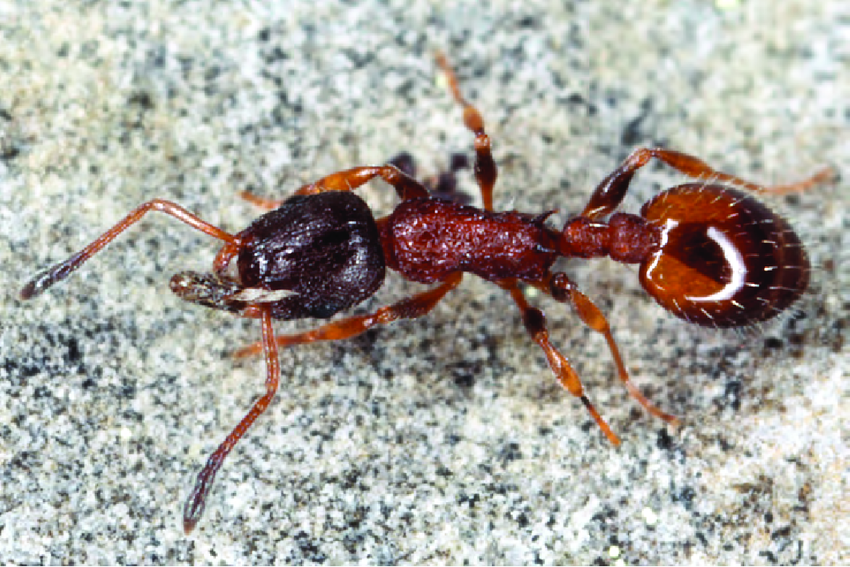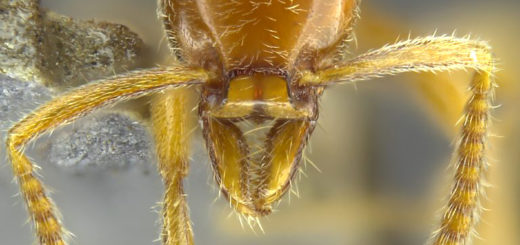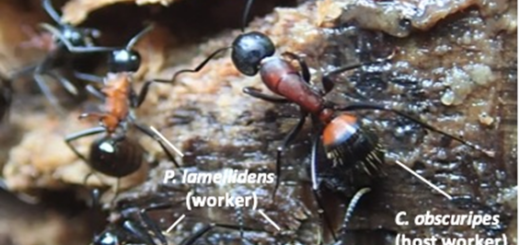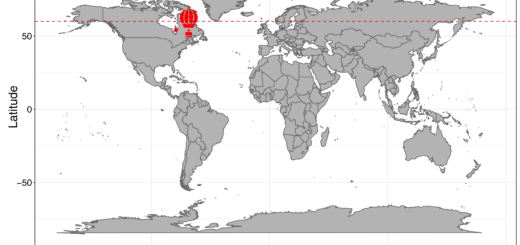Absence of genetic isolation across highly fragmented landscape in the ant Temnothorax nigriceps
In the article “Absence of genetic isolation across highly fragmented landscape in the ant Temnothorax nigriceps” published in BMC Ecology and Evolution, Marion Cordonnier, Dominik Felten, Andreas Trindl, Jürgen Heinze, and Abel Bernadou investigate the impact of habitat fragmentation on the genetic diversity and population structure of T. nigriceps. The study uses nuclear and mitochondrial markers to analyse genetic diversity and population structure at multiple spatial scales, as well as colony genetic structure and queen mating frequency. The results suggest that although there is genetic structure on a European spatial scale, there is no impact of fragmentation on a regional scale, and there is no genetic population structure on a regional scale. The study also suggests that despite living in fragmented patches of habitat, populations of T. nigriceps are not genetically isolated at a regional scale. However, nestmates are more related than expected, indicating that large-scale dispersal does not fully prevent genetic isolation. Here, first author Marion Cordonnier highlights the main points.
An Interview compiled by Hoon Kan, Patrick Krapf, and James Trager

MNB: Could you tell us a bit about yourself?
MC: I am a French Ecology Postdoc conducting research about the impacts of humans on interspecific interactions. I am mostly motivated by the understanding of how anthropogenic disturbances are impacting the relationships between species, ranging from competitive interactions, predation, mating choice, and more. I mainly study ants, but also occasionally birds, domestic cats and large mammals. I defended my PhD in Lyon (France) on the impact of urbanization and climate change on biological invasions and interspecific genetic exchanges within the Tetramorium caespitum ant species complex. Then, I worked at the University Paris-Saclay (France) to study the biological invasions and competitive interactions within several native and invasive ant species. Now, thanks to a Research Fellowship provided by the Alexander von Humboldt Foundation, I am pursuing my work in the lab of Prof. Dr. Jürgen Heinze, at Regensburg University (Germany), mainly working on Temnothorax ant species. On a more personal view, I am also the mom of a little 1-year-old boy, a nature lover, I like Rock’n’roll, crafts, and many other things that will probably interest no one here 😉.
MNB: Could you briefly outline the research you recently published in layman’s terms?
MC: Anthropized landscapes often exhibit a strong habitat fragmentation which potentially reduces genetic exchanges between previously connected populations. This should also be true in ants – why not? The ant Temnothorax nigriceps nests in rock crevices of dry and warm grasslands, a specific habitat which has been significantly reduced over the last decades in Europe (e.g., due to intensive agriculture or afforestation), and this species is thus likely experiencing a reduced gene flow between disconnected habitats. Using a combination of nuclear and mitochondrial markers, we highlighted a strong genetic structure at the European spatial scale, so distinct populations in different European countries (not very surprising, right?), but no impact of fragmentation at a regional scale – which was less expected. No genetic structure was observed within the different populations of the same regional pool of samples. However, nestmates were more related than expected, suggesting that large-scale dispersal does not completely prevent genetic isolation. We concluded that the ecological requirements of T. nigriceps may explain their resilience to habitat fragmentation by allowing them to survive in very small patches of suitable habitat.

MNB: What is the take-home message of your work?
MC: I guess we will have to collect new nests of T. nigriceps to answer more questions…! More seriously, it is always nice to discover that some species can withstand the detrimental consequences of anthropization. Being small is likely helpful, but the nuptial flight is a well-suited behavior to overcome the negative effects of habitat fragmentation.
MNB: What was your motivation for this study?
MC: This is a funny story about very old (but nevertheless awesome) data that were bored in a drawer. Abel (Dr. Abel Bernadou) collected many colonies some years ago, planning with Jürgen (Pr. Dr. Jürgen Heinze) to conduct a landscape genetic analysis on this largely unstudied species. Then, these data stood for a while before finding someone who had time to run the genetic analyses. When I joined the lab, we restarted the project together, with the invaluable help of Dominik Felten, an amazing BsC student, and Andi Trindl, a super tech who helped so much with the molecular work. In the end, this is the funny story of why we should never let “sleeping ants lie” in drawers because they have still much to tell us. My motivation was therefore to awaken them.
MNB: What was the biggest obstacle you had to overcome in this project?
MC: Maybe this is totally out of place (?), but I think that the main challenge was that I started my pregnancy in the very middle of the project. It was not that easy to collect more ants (I was so slow that I felt that even ant nests managed to escape me…), but more importantly most of the molecular analyses were not possible anymore for me due to the use of chemicals. This required a quite complicated organization, with a lot of planning, and most of all amazing collaborators, which luckily, I had.
MNB: Do you have any tips for others who are interested in doing related research?
MC: I would have appreciated collecting additional information to get more details on the species’ ecology; For instance, about microhabitat features, e.g., humidity, nesting material, and orientation of the nest, etc. We know so little about this species! I so appreciated the amazing work of Abel in keeping all the information clear. Ten years after the specimens were collected, he was able to provide all the details, all were perfectly stored, and every file was clean. So my tip would be: try to save your data in such a perfect way because you and others who follow will then always manage to do interesting and reproducible science with them.
MNB: Where do you see the future for this particular field of ant research?
MC: If we are strictly speaking about research focusing on this particular species, I will investigate the possibility that T. nigriceps uses new habitat features in human-modified environments, such as stone walls or rocky elements of urban areas, to overcome the effect of anthropogenic fragmentation. But this is a tiny part of its ecology, whereas nearly everything remains to be done with this species, which has rarely been studied so far. Regarding the study of fragmentation in ants, in general, I think that this is something clearly neglected in previous research; very few studies concern the effects of human activities on gene flow in ants. Also, human impacts on the genetic structure of colonies have so far been overlooked. Several recent studies clearly suggest that these issues are highly topical and affect many taxa. Ant species constitute a very suitable model to explore these concerns, so I hope to read (and reveal) more about how anthropic drivers impact gene flow in ants in the coming years.





Very interesting research!
I think that for most species of ants of the genus Temnothorax, data on ecology, biology, etc. are unknown. Therefore, this study will make a great contribution to the knowledge of the wonderful world of these small and interesting insects.